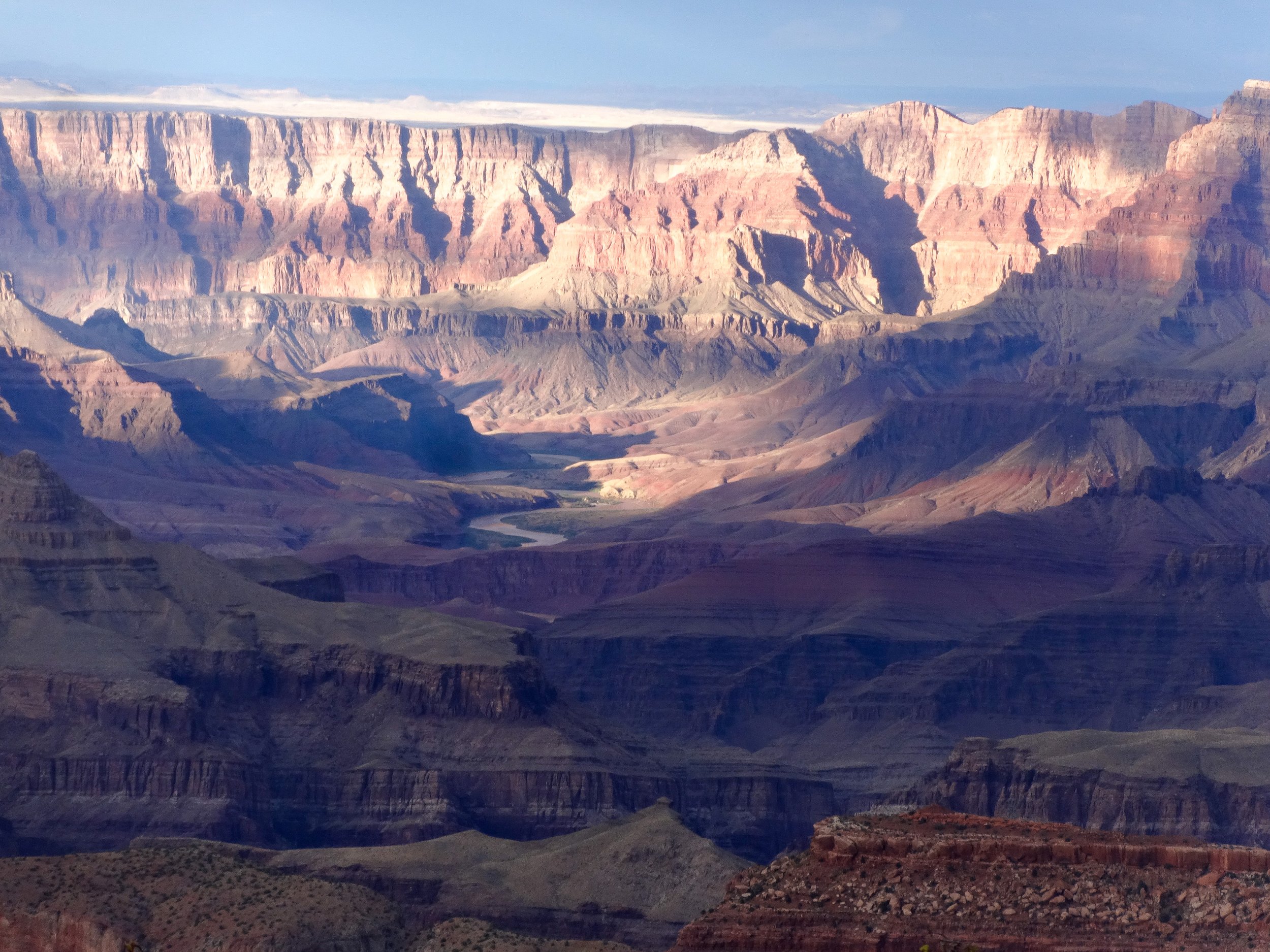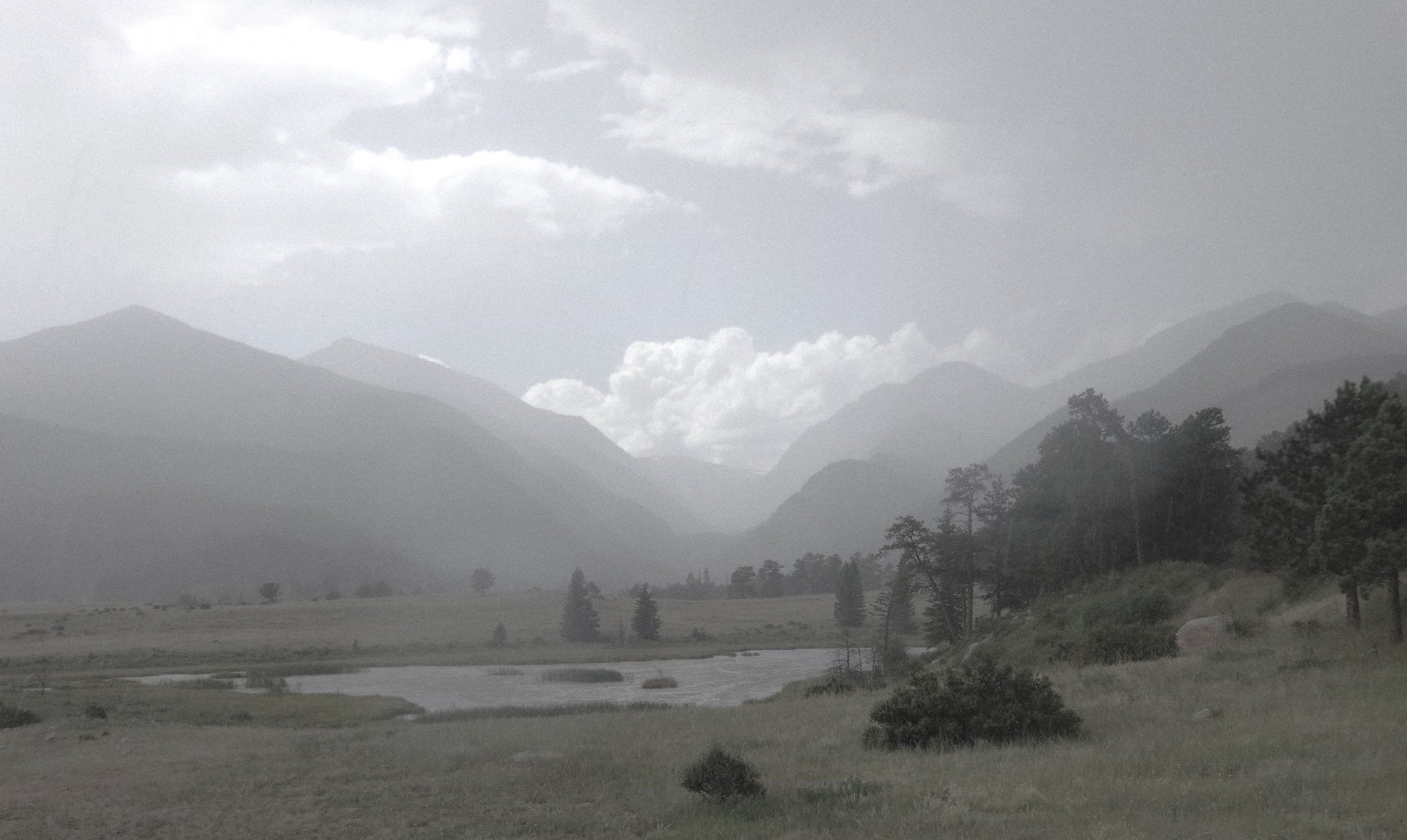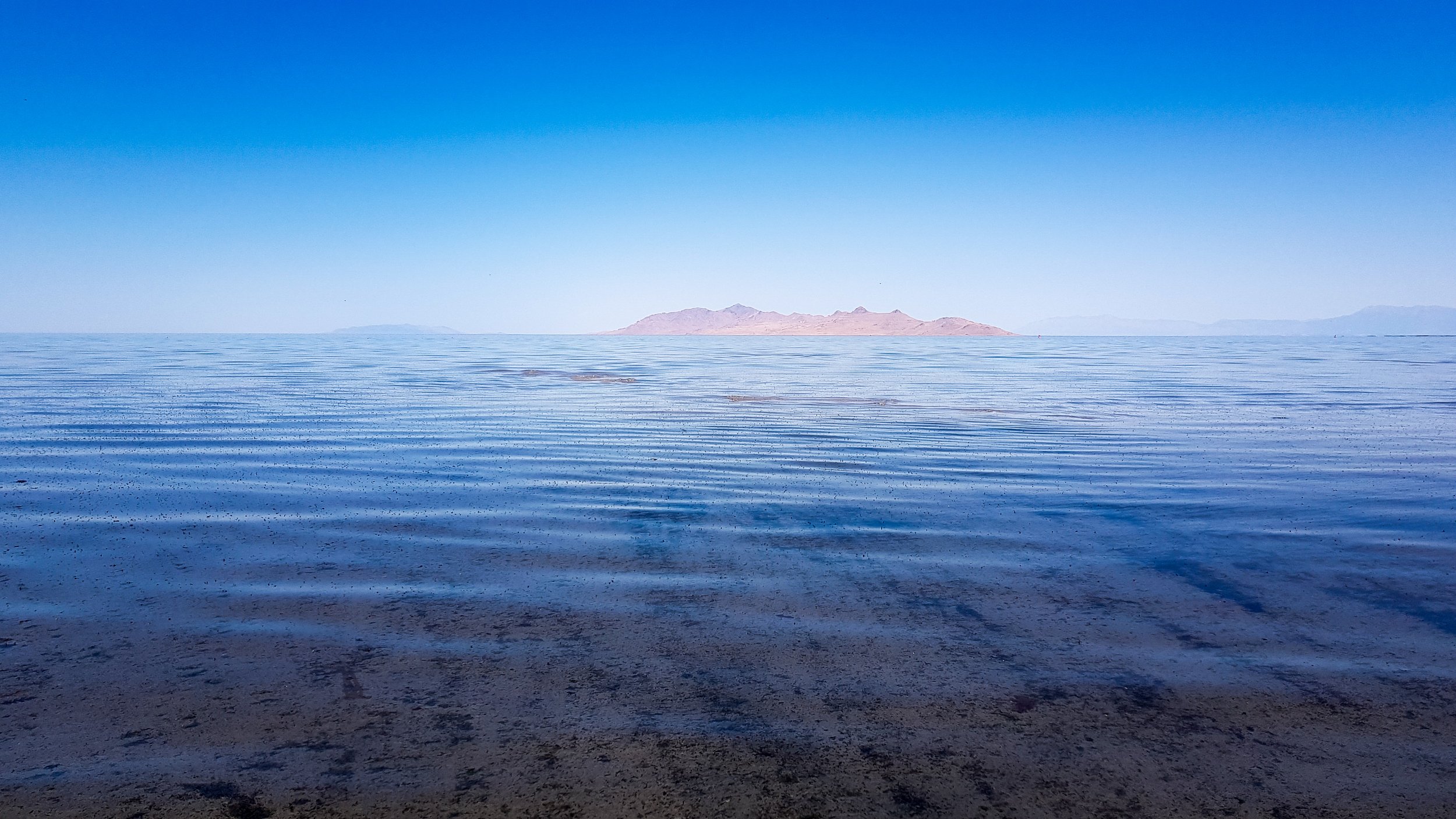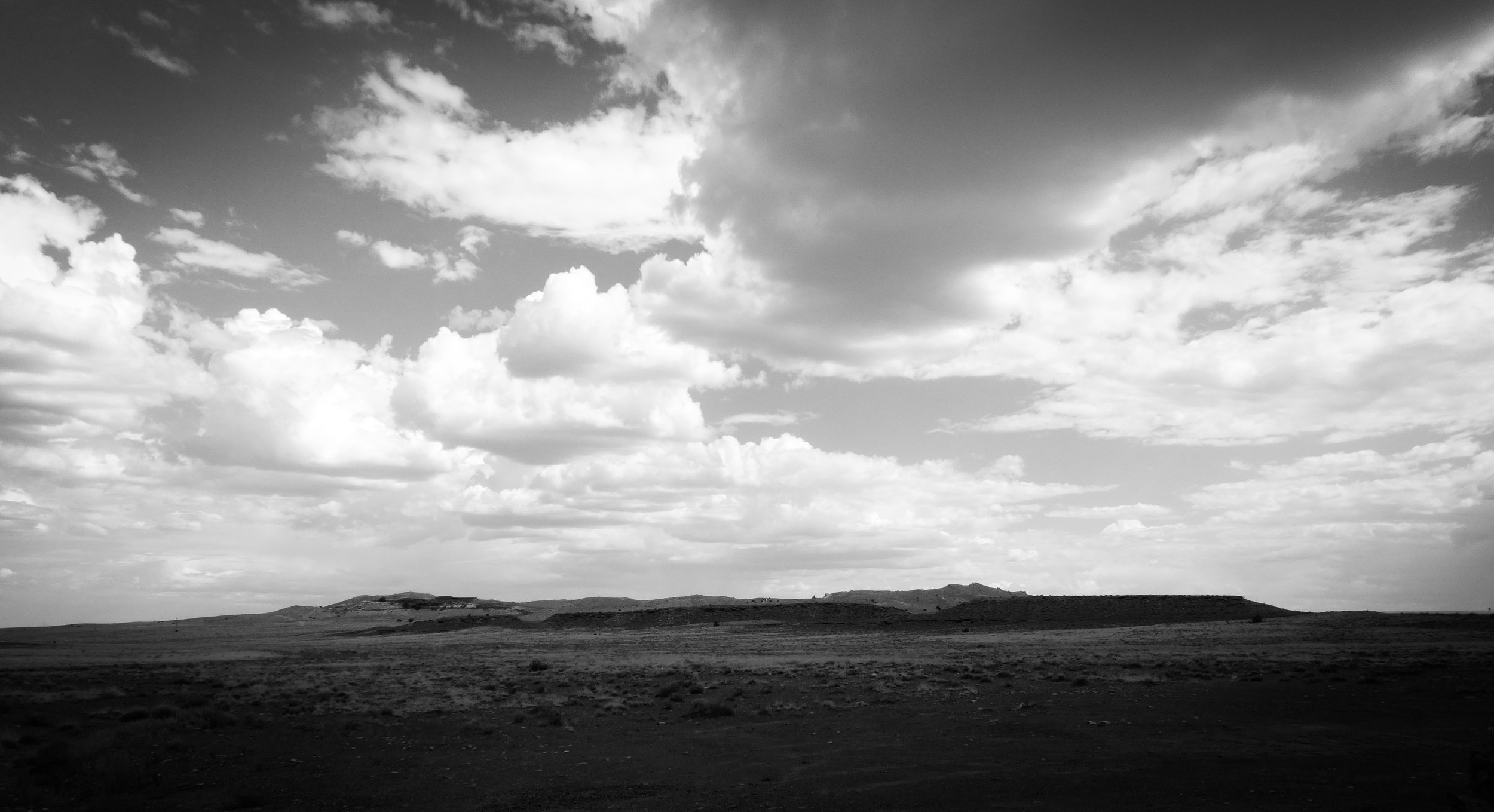Let us be lovers, we'll marry our fortunes together.
I’ve got some real estate here in my bag.
I’ve had the words of Simon and Garfunkle’s America in my head since my teens. The glamour and pathos of travelling across the US: sad, soulful, stretching out. Paris, Texas too: Harry Dean Stanton’s endless walking, desert, roads.
My partner Julie and I started with a few days in Chicago, then flew to a conference in Madison, Wisconsin. Hiring a car, we drove west through Minnesota to Badlands in South Dakota and then on to Yellowstone in Wyoming (see map and string, below). After that, we turned south to Salt Lake and Bryce Canyon in Utah. Another turn west to Las Vegas then back east through the Grand Canyon to Santa Fe in New Mexico. Finally, we turned north to Colorado. A semi-spiral of about 4,500 miles driving in total: ten states, eight national parks, three weeks. My dad had lived in the United States in the 1940s and 1950s, and often talked about his trip to Yellowstone (or was it Yosemite), the giant redwoods, and the Grand Canyon. These places had come to have an almost mythical status in my mind.
Nearly all the Americans we met were very friendly and likeable (aside from two scarily right-wing taxi drivers in Las Vegas). And not in a fake, ‘American stereotype’ way, but with genuine warmth and openness. People talked to us: about their lives, their politics, their connections to England and Europe.
‘I love you accent. Where are you from?’
‘Just south of London. Have you been there?’
‘No, I’d love to, I’ve only ever been to Paris in Europe.’
‘It’s beautiful there isn’t it. We love Paris. Did you find it different from here?’
The sheer beauty of the American landscape was, perhaps, the most memorable aspect of the trip. The Grand Canyon, Badlands, Bryce Canyon, Yellowstone, Rockies, Great Sand Dunes… so many places that swallowed you up in their vast otherworldliness (see favourite pictures, below; and full album here). The Grand Canyon was like a cut-away through the Earth; Bryce Canyon had the most weird-and-wonderful red rock sculptures. Breath-taking, and lovingly cultivated through the American national parks system. On the road too, through Wyoming or South Dakota, mile after mile of rolling land beneath the widest of skies. I can see why American colleagues of mine, like Kirk Schneider, write so much about ‘awe’: truly an awe-inspiring region of our planet.
While American landscapes swallowed us in, urban areas seemed to do the very opposite. Whether in smallish towns like Sioux Falls or large cities like Denver, we felt we just couldn’t find their ‘centre’: the place from which the town or city radiated out? ‘Strip malls’ in the suburb, criss-crossing motorways, empty downtown areas… each time we visited a town or city we tried to start at it beating heart, but it seemed to run through our fingers like sand. Centrifugal rather than centripetal: towns that dispersed, moved away. I realised that the centrelessness I had felt, some years ago, in Los Angeles wasn’t specific to that city, but was more generic to many American conurbations (though not all: New York, for instance, felt much more ‘centred’). It felt so different to our European towns and cities, with high streets and churches at their core. Perhaps, we wondered, it was historical: our towns had evolved when people walked. American conurbations had grown up around the car. But what of community, of people constellated together? For us, as Europeans, we had a powerful sense of disorientation and anomie.
Las Vegas was the worst: we just couldn’t wait to get out of there. Mile after mile of amusement arcades—soulless, empty, barren. The dominance of machines, noise, and flashing lights over any kind of human connection.
I recently read Edmund Burke, the conservative philosopher, for my book on social change. I wanted to look at some counter-arguments to progressive thinking, but haven’t stopped quoting him since. He was writing against the French revolution, and one of his main points was that, by trying to forge something new, we can end up destroying the subtle, nuanced, imperceptible relationships that make things the complex whole that they are. American towns, with their grids of streets and avenues seemed a good example of that. Mathematically perfect and efficient, but something seemed missing: the messiness, complexity, and historicity that gives things their richness, depth, and soul. We wondered if that was why religion was so prevalent in America: because it gave people a community that they did not have otherwise.
As we drove, we listened to several American short stories from The New Yorker. The most memorable was John Cheever’s The Swimmer, written in 1964 (we watched the 1968 movie with Burt Lancaster, also very good, when we got home). It’s the simplest of narratives: a middle-aged confident, handsome man decides that he’s going to swim through the pools of New Hampshire suburbia to get back to his home and his wife and daughters (spoiler alert). In the first few pools, people greet and welcome him, give him cocktails: the local, all-American hero. But as he swims on, it becomes evident that he’s not the success that he seems: neighbours whisper about him behind his back, mock him, tell him to get out of their pool, ask when they’re going to get their money back. Eventually, it becomes evident that even the family and home he thinks he is swimming back to is an illusion: he is ruined, failed, destitute. For us, there was something so poignant about the story, and so reflective of our felt-experiencing of America: beneath the American dream, beneath those straight, clean lines of achievement and success, something much more sad, lonely, and alienated seemed to lie. Edward Hopper’s Nighthawks (1942), which we saw in the Chicago Institute of Art (below), is famous for depicting something very similar about American existence.
We were surprised by how many Americans we talked to were ardent Trump supporters. Thoughtful people, and generally kind and generous, but adamant that Biden was selling America to the Chinese and that Trump was their last hope. Digging deeper into their worldviews, we found a passionate advocacy of ‘negative liberty’: to be free of external restraints and self-determining. ‘No one has the right to tell me what to do’, ‘Why should I support people who don’t work,’ ‘“Global warming” is just the liberal elite trying to control us.’ The pursuant of liberty, but without much sense that that freedom was always within a context and had repercussions for others. Perhaps it’s the space, the vastness that has inculcated a spirit of moving out without a sense of what we might be moving in to.
And, of course, the European settlers were not reaching out over empty, unpopulated lands. As we travelled, we heard story after story of the destruction of native American peoples by the Europeans. Massacres, the abduction of children, killing off the buffalo, forced conversions to Christianity. The complex network of peoples and cultures that had existed for thousands of years was destroyed like a hand through a spider’s web. We saw some acknowledgement of this in museums across the country, but it seemed at a very formative stage compared with, for instance, Aotearoa New Zealand’s acknowledgement of Māori traditions and rights. Racism in America also seemed compounded by the abduction and enslavement of millions of Black Africans, giving it multiple historical and cultural layers.
Julie and I talked about the Europeans who had first come to America and the kind of traces that they might have left: genetically as well as culturally. Not only were these people who wanted to escape religious persecution, but also those willing to brave the journey to a new and uncertain land. Perhaps the most driven of Europeans, or the most courageous, or those who valued independence above all else. A society of strong-willed, determined people: no threads to hold them back.
We also listened to the audiobook of John Steinbeck’s East of Eden during our drive, and managed to get most of the way through its 600 pages. It’s a saga of love and hatred between brothers—inter-generational pushing and pulling, freedom and relationality. America, to me, seemed a land of push, of space, of reaching out to beyond. A wonderful strength of possibilities; but, without the centripetal pull, at risk of dissolution, dispersal, destruction. Reaching out cannot go on forever. Negative liberty pushes, but in that push it can forget that we live, inevitably, within bounds; one person’s push is another person’s subjugation. The American landscape touched that part of me that wanted to reach out infinitely; but, in its social organisation, it reminded me of my desire for relatedness, community, and soul.
The last verse of Simon & Garfunkle’s America:
‘Kathy, I'm lost’, I said, though I knew she was sleeping
I'm empty and aching and I don't know why
Perhaps I felt a little closer to understanding that ache.























